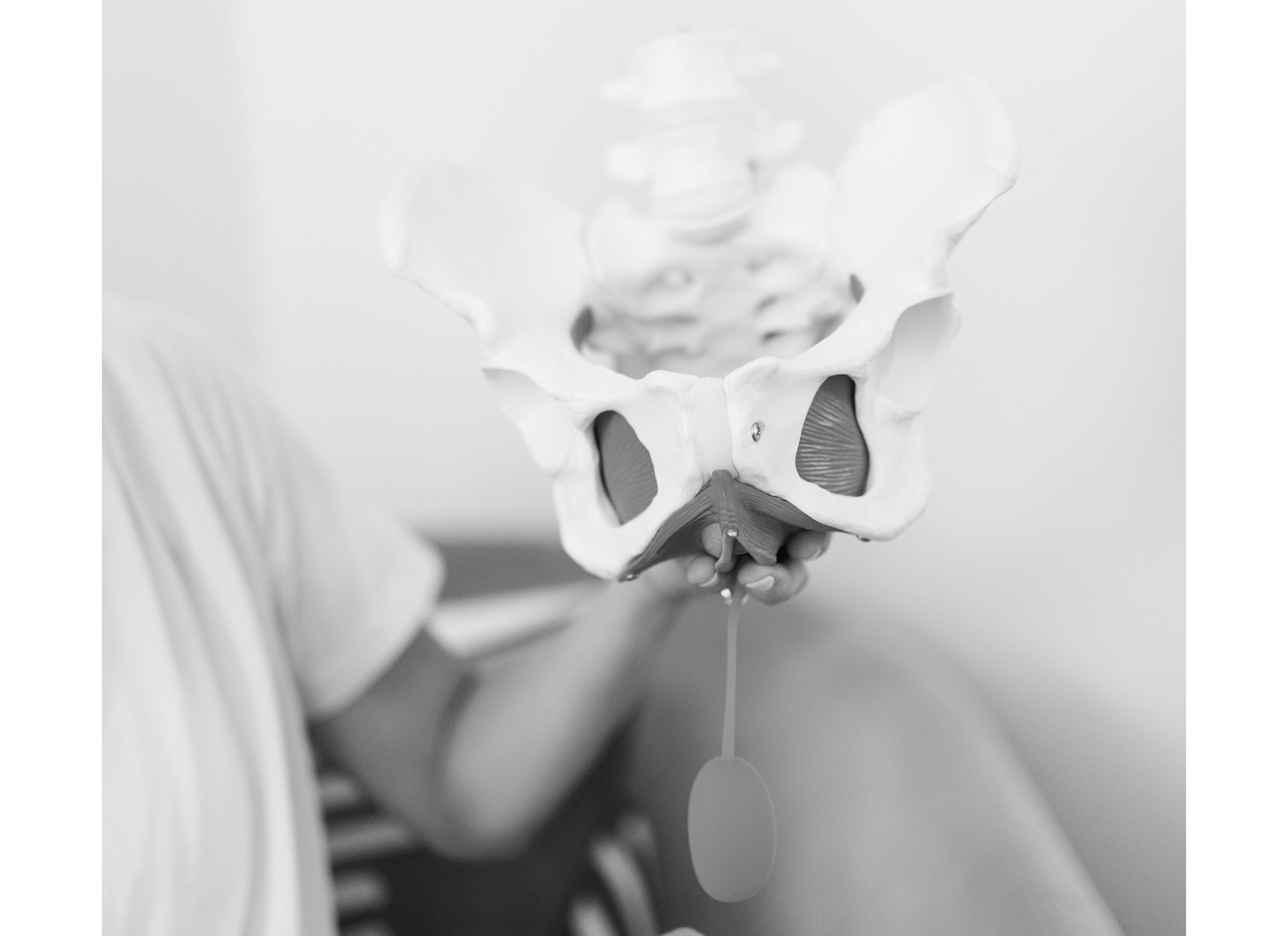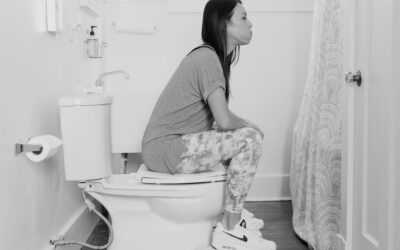If you’ve ever so much as whispered a question about your pelvic floor, I can guess two things about you:
- You’re in the right place. (It’s so nice to have you here!)
- You’re suddenly getting tons of ads for pelvic floor trainers. (Thanks a bunch, targeted advertising…)
Pelvic floor trainers promise to take Kegel exercises to the next level. But do they actually work?
Let’s get to the bottom of pelvic floor trainers together!
The 4-1-1 on Pelvic Floor Trainers
Question: What is a pelvic floor trainer?
Answer: An internal or external device that strengthens the pelvic floor muscles.
Pelvic floor trainers help make Kegels more efficient and effective at strengthening the pelvic floor muscles. They range from fancy wearables to itty bitty weight sets (yes, really), and many of them connect to mobile devices and use biofeedback technology. That means you can see if you’re doing the exercises correctly in real time. Some pelvic floor trainers can also give you real-time feedback and help you in tracking your progress. (I’ll say more about the different types of trainers a bit later.)
Question: Are pelvic floor trainers safe to use?
Answer: That depends on your pelvic floor muscles.
Pelvic floor trainers are designed to strengthen your muscles. That means you shouldn’t use one if you have any symptoms of pelvic floor tension, such as painful sex, pain when sitting, vaginal pain, pelvic pain, tailbone pain, or difficulty peeing or pooping. For these challenges, your best next step is a pelvic floor relaxation program instead.
If you’re experiencing symptoms of pelvic floor weakness—such as urinary incontinence, pelvic organ prolapse (POP), difficulty holding in poop, or frequent urinary tract infections (UTIs)—a training device is most likely safe to use.
If you decide to give a pelvic floor trainer a try:
- Check with your OB/GYN first, especially if you’re pregnant or have an IUD.
- Make sure to read the device instructions and watch all the tutorials to make sure you’re using it exactly as intended.
- Clean your trainer before and after every use. Warm water and antibacterial soap does the trick for internal trainers. External trainers come with specific cleaning instructions.
Question: What are my pelvic floor trainer options?
Answer: You have several internal and external options.
When it comes to pelvic floor trainers, you’ll find significant differences in style, function, and price.
The first kind of pelvic floor trainers are internal biofeedback devices. I recommend the Elvie, Perifit, or kGoal.
Elvie
The Elvie is an internal, biofeedback-based pelvic floor trainer. The device walks you through several exercises and levels to start with, and it can track your progress as you get stronger. The Elvie can even detect incorrect Kegels so you get the most out of your exercises! The high price point might be a barrier, but most users are very happy with their results. This option is IUD-safe.
Perifit
The Perifit pelvic floor trainer uses biofeedback games to keep you entertained during your exercises and motivated to keep going. It also has a more anatomical shape than other options, which some users find more comfortable. Similar to the Elvie, the Perifit pelvic floor trainer is pricey. It’s also safe to use with an IUD.
kGoal
kGoal offers a combination of guidance, tracking, and games to get your Kegel on. Most people call this a dupe for the Perifit. The extra bonus, though? It’s adjustable! You can inflate or deflate part of the device to make it more comfortable.
Another kind of pelvic floor trainer focuses on external stimulation, like the Innovo and Emsella.
Innovo
If you’re concerned about urinary incontinence, these “smart shorts” might be for you. (It’s their specialty!) The Innovo sends electrical stimulation through your buttcheeks and into your pelvic floor muscles. In other words, you don’t have to lift a muscle to get the benefits of excellent Kegels! While it’s advertised as comfortable and pain-free, the initial sensation can take some getting used to, and it’s a pricey option. The Innovo is not safe for folks with an IUD or other metal parts, like a pacemaker.
Emsella
The Emsella chair is a highly effective, non-surgical and non-invasive treatment specifically for urinary incontinence. The device emits a high-intensity focused electromagnetic (HIFEM) wave to contract the pelvic floor. Unlike the other options listed here, Emsella treatments happen in a physician’s office. Typically, people get results in about six, 30-minute sessions. It’s pricey, between $2000-$3000, and requires follow-up treatments every 3-6 months.
A third option is more old-school: Kegel weights.
Kegel Weights
Kegel weights are manual, internal devices—little balls or eggs placed into the vagina. By trying to keep them inside, the pelvic floor muscles contract and relax, growing in strength over time. Kegel weights usually come in sets of varying weights. They’re more budget-friendly than the higher-tech options, but they can’t help with tracking your progress.
Question: With so many pelvic floor trainer options, how do I choose?
Answer: It’s really up to you!
Your pelvic floor trainer should be:
- Comfortable
- Functional
- Easy to use
When choosing a trainer, consider your goals, level of experience, and budget. For beginners, I recommend starting with silicone or steel Kegel weights.
Question: Do I actually need a pelvic floor trainer?
Answer: Nope!
You can strengthen your pelvic floor and core with or without a trainer—through Kegels and other exercises. But some people find that a trainer offers them helpful feedback to make their strengthening practices more effective and efficient.
Question: Are there any downsides to pelvic floor trainers?
Answer: It depends on whom you ask.
Like with most things in life, opinions are plentiful when it comes to pelvic floor trainers. So let’s talk about some of the claims people make against the devices.
- Claim 1: Pelvic floor trainers force the muscles to clench for too long, which can create pelvic floor tension. I appreciate this concern, because tense pelvic floor muscles hurt. That’s why it’s important to follow the manufacturer’s recommendations for whatever trainer you choose. In general, I recommend training your pelvic floor muscles for about 10 minutes, three times a week.
- Claim 2: Pelvic trainers are inconvenient. It’s true that it’s tough to use Kegel weights in the grocery store or a Perifit during your kids’ school play. But there’s also no reason to! If you really want to work on your pelvic floor fitness in public, do regular old Kegels. If you want feedback or resistance, use a pelvic floor trainer at home.
- Claim 3: Resistance is unnecessary for pelvic floor muscle strengthening. When strengthening any muscle group, it’s helpful to gradually add weight/increase resistance over time. That’s what Kegel weights do: They add resistance for the pelvic floor muscles to work against, which can gradually improve strength and coordination. But it’s not necessary to add resistance, as the resistance you get with pelvic floor-specific exercises can be just as effective… and free!
The bottom line is there’s no should or shouldn’t when it comes to pelvic floor trainers! If using a device will keep you motivated and help you practice Kegels, go for it. If using a device feels like a pain in the butt, don’t use one. You get to decide what’s best for you!
Get pelvic floor training—no device required.
The V-Hive Membership helps you move beyond cookie-cutter Kegels through curated workouts you can do in the comfort of your own home. Get back to the activities you love through three, 10-minute workouts/week. Start your free 7-day trial today.





